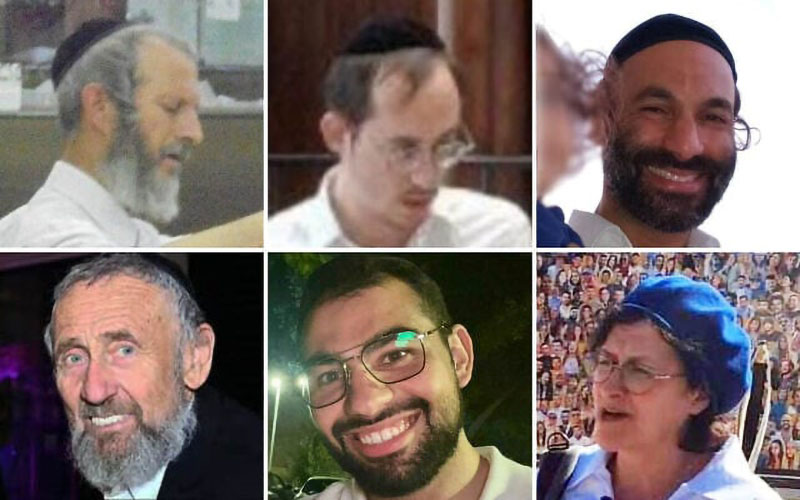(RNS) — Elul has arrived, the month that leads to the Jewish days of awe. During this month, the custom is to blow the shofar, or ram’s horn, every day during morning prayers in the synagogue, so as to remind us of the coming days of intense spiritual introspection.
The shofar always sounds like a piercing cry. But the piercing cries are real. The news yesterday morning (Sept. 8) from Jerusalem broke like the broken notes of the shofar: Six human beings murdered at a bus stop, ages spanning from their mid-20s to late 70s; more than a dozen wounded; two gunmen killed at the scene. Israeli police considered it a terrorist attack.
Six lives — each person, made in the divine image, unique, precious. Together, they are the story of the Jewish people in microcosm.
Two were ordinary Jews whose stories reflected the extraordinary: A man who left Spain — from which Jews have been leaving and returning to for centuries — and a woman who helped Jewish kids create community. Three were ordained rabbis, one was a quasi rabbi who many considered one. They were my colleagues.
- Yaakov Pinto, 25, had recently immigrated to Israel from Spain. Recently married, he was studying at the Derech Emunah Yeshiva in Lod.
- Sarah (Sarita) Mendelson, 60, was a resident of Jerusalem’s Ramat Shlomo neighborhood. She was a longtime leader in the Bnei Akiva youth movement. She is survived by four children and grandchildren.
- Rabbi Yosef David, 43, had just taken a job as a prayer instructor. He died clutching his books, witnesses told Hebrew media. That image reminds us of the stories of the 10 martyrs who were executed for their faith during Roman times — stories congregations read on the afternoon of Yom Kippur. He leaves a wife and four children.
- Rabbi Mordechai (Mark) Steintzag, 79, once practiced cardiology. When he arrived in Israel from the United States, he noticed there was a shortage of healthy breads. So, he became a baker.
- Rabbi Yisrael Matzner, 28, a father of three, studied at the Hebron Yeshiva and continued his studies in a kollel, or an institute of higher Talmudic learning for men. Colleagues remembered his gentleness and wisdom, Israeli media reported.
- Levi Yitzhak Pash, 57, was a maintenance worker at Yeshivat Kol Torah and was known for quiet acts of generosity. Many people referred to him as “Rabbi” Levi Yitzhak, which was also the name of a famous Hasidic teacher.

Some of you might ask, would these rabbis have considered you — a Reform rabbi — their colleague? There is a chasm between our Jewish worlds. We would have disagreed about the role of Jewish law, strenuously. We would have disagreed on what prayers to pray and which to leave out. We would have embraced different versions of Zionism and ways of imagining the Jewish people. We certainly would have disagreed on how to mix the modern world with tradition.
But I love them — despite and beyond our potential disagreements, and despite not having known them — because Judaism is not just a religion. We are a people, a family, and you don’t have to like everyone in your family. You still love them.
I also mean this to say that when they come for any one of us, they come for all of us. Before they attack, terrorists and violent Jew-haters never ask, who were your teachers? What books have you read? Do you keep Shabbat? Do you mix meat and milk in the same meal? The same bullseye adorns each of our backs whether or not the coat is black.
Remember the rabbinic injunction: “Make for yourself a teacher, and acquire for yourself a friend.” Those who died were my teachers. Their teachings came not from the words that they might have said, but from their lives, which were simple, elegant Torah scrolls.
Let us lift those scrolls aloft for each of them:
- The Torah of Yaakov Pinto’s life: Our lives are journeys, and many of those journeys come straight out of Jewish history. First, he made aliyah to Israel, and then, through his marriage, an aliyah of the soul.
- The Torah of Sarah (Sarita) Mendelson’s life: Caring for Jewish kids and creating community for them is part of building a Jewish nation.
- The Torah of Rabbi Yosef David’s life: Holding a sefer (a holy book) is a way of holding onto life itself. He held those books, but in reality, they held him. He is now among the martyrs of our people who died holding their books.
- The Torah of Rabbi Mordechai (Mark) Steintzag’s life: Whatever we serve as — a rabbi, cardiologist, baker — can be a way to serve God.
- The Torah of Rabbi Yisrael Matzner’s life: Humility and sweetness are also Torah.
- The Torah of (Rabbi) Levi Yitzhak Pash’s life: The work of maintaining a yeshiva, keeping it clean and orderly, can be as sacred as teaching in its study hall. Some of my finest colleagues over the years have been synagogue custodians. They were my friends and sometimes my teachers.
“Make yourself a teacher, and acquire for yourself a friend:” Were these people my friends?
Technically, no. But, the Hebrew word “chaver,” which means “friend,” is related to the word “machberet,” which means “notebook.” As we approach the season of repentance, the biggest symbol of that season is the Book of Life, in which we hope that God will inscribe our names.
Perhaps that Book of Life is, in reality, a notebook — one of those old ones from elementary school with the marbled covers, stitched together in such a way that if you remove one page, the whole book falls apart.
These are six leaves lost from the Book of Life. We pray, no more.
Original Source:
https://religionnews.com/2025/09/09/terror-attack-jerusalem/